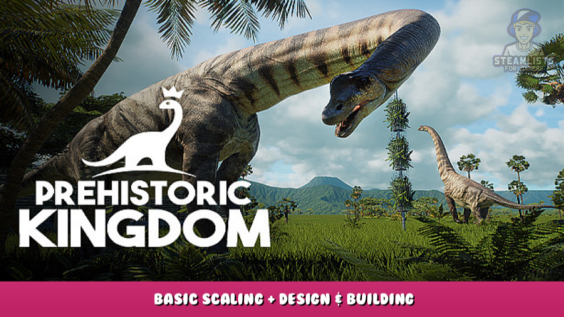
Welcome to the Prehistoric Kingdom – Basic Scaling + Design & Building Guide. This guide offers pointers, advice, and observations on designing modular structures and exhibits. Even though it is not a comprehensive introduction for newcomers, it can be a helpful tool for those just getting started.
Prefab Scaling
Too many people have said that prefabs can’t be scaled. It’s false. You can’t scale prefabs unless you have the prefab selected. However, you can do it while each piece is selected.
[For newcomers, you’ll need to click this button.]
You might wonder how you could select each element from a prefab containing hundreds of pieces. You don’t need to: press CTRL+A. You can drag a selection box across the prefab now. But that was not possible back in my time.
Terrain painting
Variation is key! Exhibits must contain at least one, two, or three types of terrain. The problem is that more than one or two textures cannot overlap. If they do, it will create ugly seams.
[Example of a texture seam.]
You are familiar with the fact that a world map requires only four colours and that no two countries bordering it will have the same colour. Your exhibit is a canvas. If you don’t want too many textures to meet, be prepared to cover them with rocks.
*Ensure that the borders between textures zones are interesting and gradual. Begin with a curvy, tendril-y border (not straight). Next, add splotches from one texture to the other and blend them.
[Example of a forest floor texture with the foliage removed to improve clarity]
It’s important to check that the textures are still readable at the end of your habitat construction. The terrain should have mud at the lowest points, fallen leaves below trees, and crumbling boulders may look better with some gravel underneath.
Square Path Corners
I used to be frustrated when paths snapped to each other in places I didn’t want. A great man who goes by Sticky showed me that fences and paths don’t snap when you’re holding down shift. This can be used to ‘fake’ square paths corners. To do this, use the smallest path diameter to cover the corners of a larger path.
Exact Placement
*Say that you want to place two wooden partitions in a window. This will divide the glass into three equal pieces. This is how I would do it personally: I would stack three pieces (or any other wood on top of each others, assign them different colours, then use the whole to measure.
*A quick way of repeating elements at equal distances from one another is to copy two and then overlap one with the existing element. When you’re done, you can delete the one that isn’t needed.
[A demonstration. To create a third, I am copying the leftmost pillars. The middle pillar now has two pillars within each other.
*If you wish to align a new item with an existing one on only one axis, you can do this: Advanced duplicate the element and then select the element you want from below. You can now hold the new element in the same place as the original one and move it along one axis.
Scaling Forests
Pro tip: A terrain-smoothing bristle set to 5% strength does nothing but re-align the foliage with the ground. This fact can be very useful if you want to create a custom-sized forest of trees while still leveraging the speed and randomness of a foliage brush. If the terrain below is not flat, scaling a group or more of plants will cause them to lose alignment with the ground. Simply brush in your plants and edit their groups. Remember). Next, use the smoothing brush for sunken stems or floating tree trunks to be re-positioned on the ground. This trick has helped me fill large habitats with giant horsetails. I wouldn’t be able to place them all individually. Another option is to fill your exhibit with redwoods that are large enough.
[normal forest, boring, unoriginal]
[giant squished palm forest, daring, inspired]
Modular Building Tips
*If you suffer from OCD that is life-threatening, lock angles can be used to your advantage. Even if the angle is only 5deg, it will be much easier to align other elements and achieve greater symmetry.
*Tastes may vary, but I believe buildings look best when there is some symmetry around them, with a few elements of asymmetry.
*At the beginning of the process, looking at your building’s 2D shape from a top-down view is important. It’s not good if it’s a container. It’s better if it’s a collection or boxes of different shapes. You can also use a hexagon or circle. A side shack or roofed terrace is my favorite way to add complexity to a building’s form.
*Compartmentalise is the best option for empty walls. You can add depth to your walls with pillars, quoins, planter boxes, horizontal dividers, and planter boxes.
Mirroring a piece/prefab can be done by scaling it in the opposite direction to the axis points and then dragging it ‘through it’. You might want to mark the dimensions of your original object/piece with small modular pieces or terrain painting so that the mirror doesn’t look stretched or squashed.
*A chimney and some dormers are essential for any angled roof. A flat roof is incomplete without air conditioning, solar panels, planter boxes, and an access point.
Inspiration & Planning for Building
It’s not for everyone, but you can make a drawing of your home first. Do not worry about your skill level: If you can draw one box, you can draw several boxes. A building can be drawn if you can draw at least two boxes. I have started most of my prefab buildings with a sketch. Sometimes the final result looks different, but that’s okay!
*Inspiration can come from many sources. Take a walk outside and take in the sights. Create a Pinterest account. Blatantly copy the architecture from your favorite video game or movie.
Rocks
*Prehistoric Kingdom’s scaling feature may be very nice, but it’s best not to scale rocks too far from their natural size and proportions. It blurs their texture, and I believe it’s best to maintain a consistent level.
*There are no cheating rocks. I always keep one finger on my hotkey to switch to advanced editing when building large rock features. These features look best when every type of rock is scaled and rotated differently. You can still create such a feature quickly if you build and then repeat a few subunits. You can combine rocks from different types to make a wall, a boulder, or a column. Variation is still important, so combine as many prefabs as you can.
*Keep in mind that many rocks have beautiful undersides. This means you get two rocks for the price one. This is twice the rock per rock!
Exhibit Design
I am not an expert in this, but I will try.
*First, replace the long glass wall with a few viewpoints. This allows you to better shape what guests see (. The landscape does not need to look great from more than a few angles). Animals can also choose privacy behind a solid wall. Variation is key again: one viewpoint is high above the ground, another is closer to the ground, and yet another allows you to see a small glimpse into the shelter of the animals.
*Bleed the habitat’s interior to its exterior. You can use the same foliage and terrain types as the exhibit’s immediate surroundings.
*It might be worth hiding your fences or avoiding their use. Use dense foliage, rock walls, and moats. Safer, too. A Tyrannosaurus can break down a fence (if the devs add that possibility). However, I’d love to see that jump five metres.
[Here’s an illustration of what I mean. The guests cannot see the stone-bordered ditch from their perspective, creating the illusion that the exhibit continues forever.
I hope you enjoy the Guide we share about Prehistoric Kingdom – Basic Scaling + Design & Building; if you think we forget to add or we should add more information, please let us know via commenting below! See you soon!
- All Prehistoric Kingdom Posts List


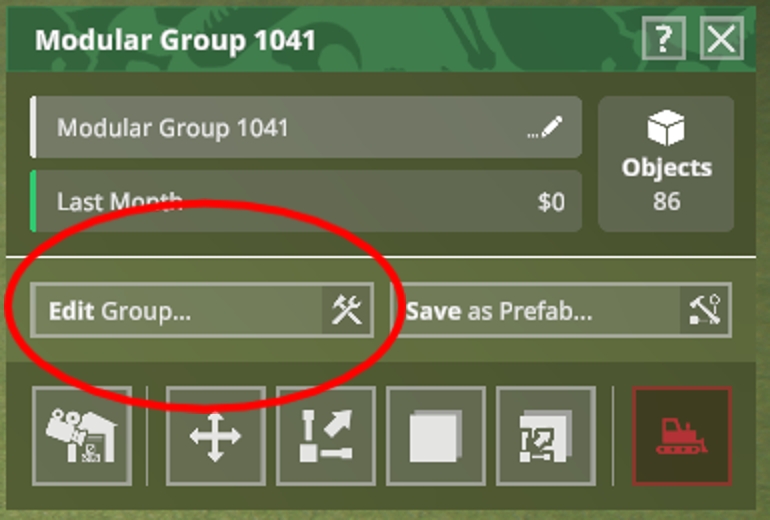
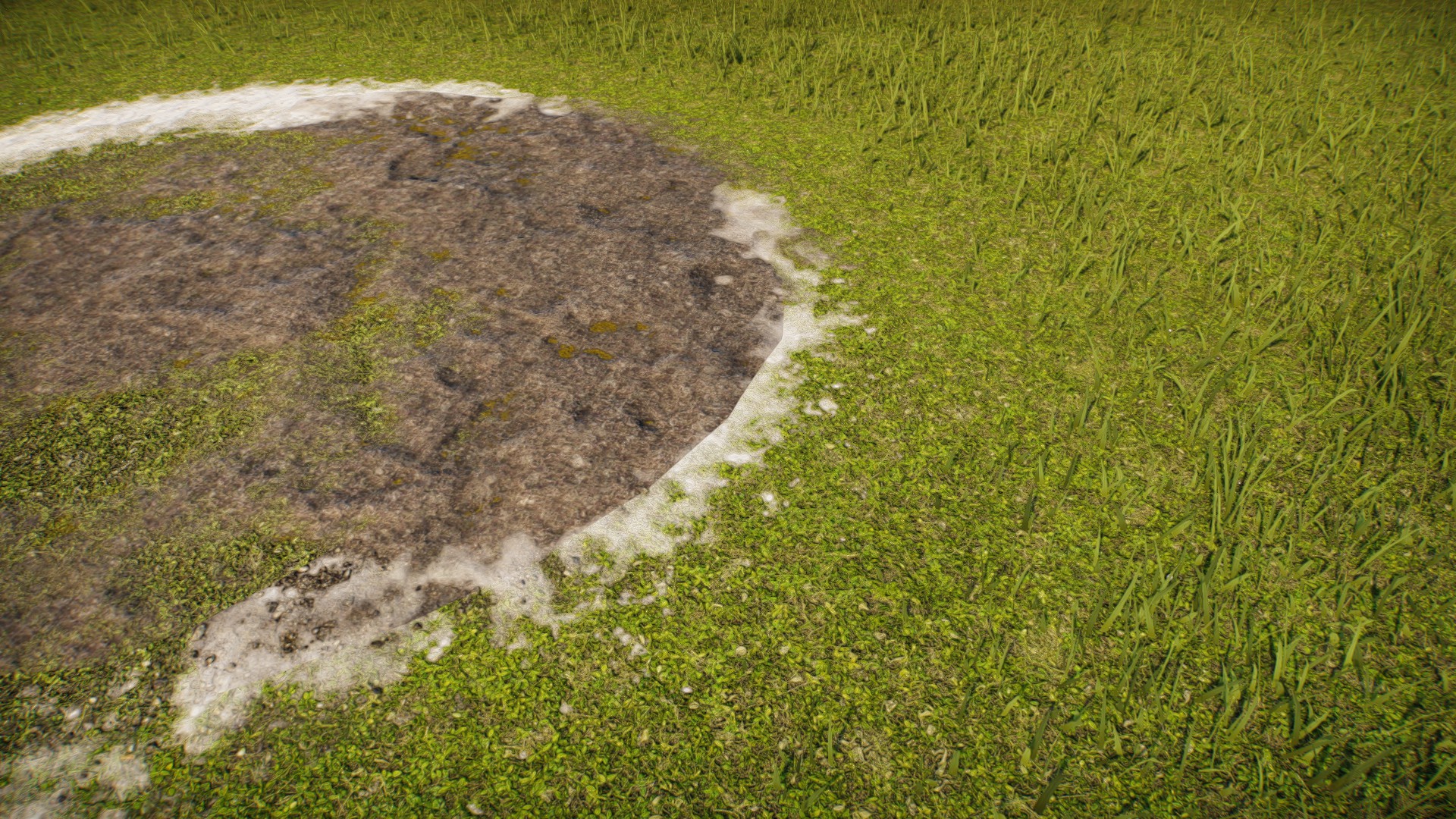
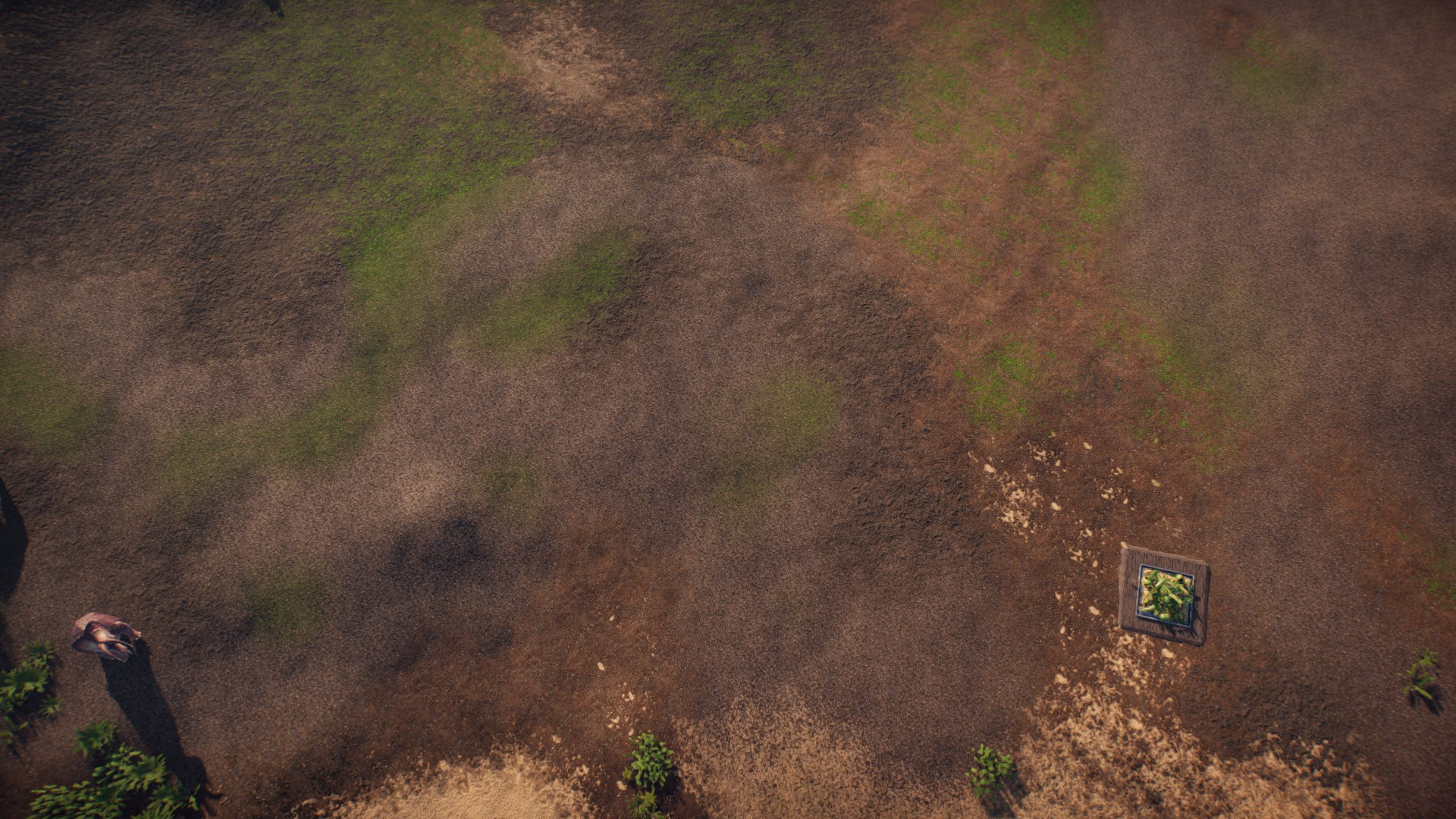
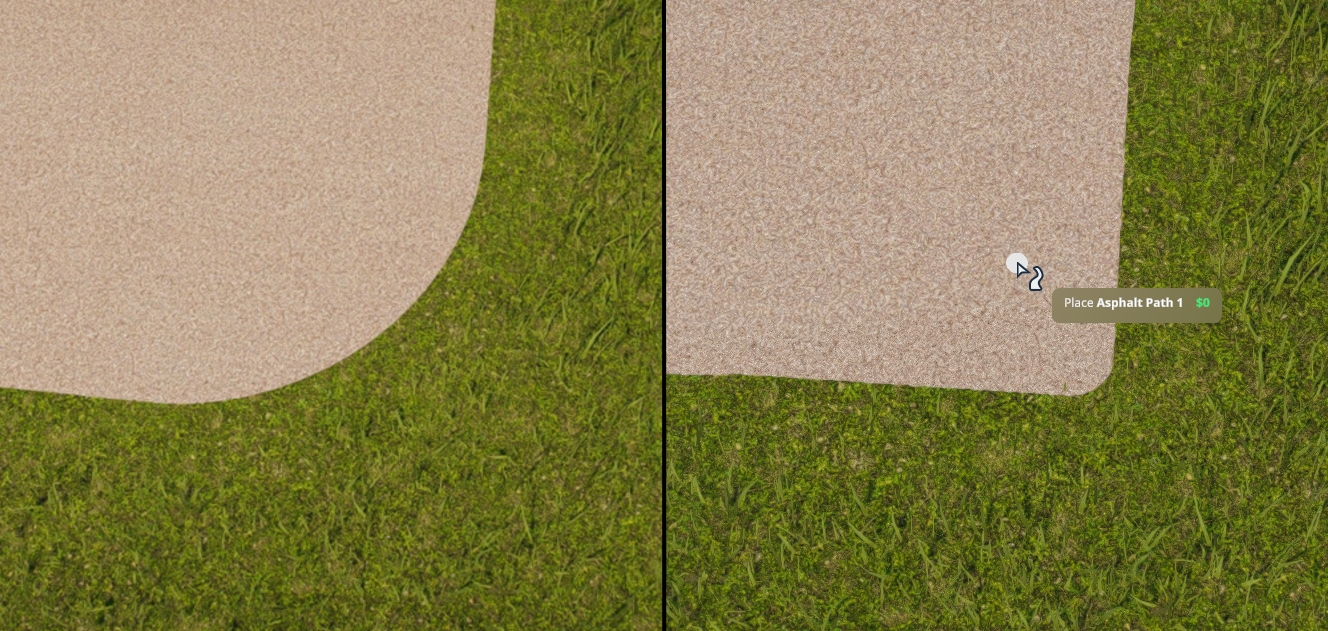
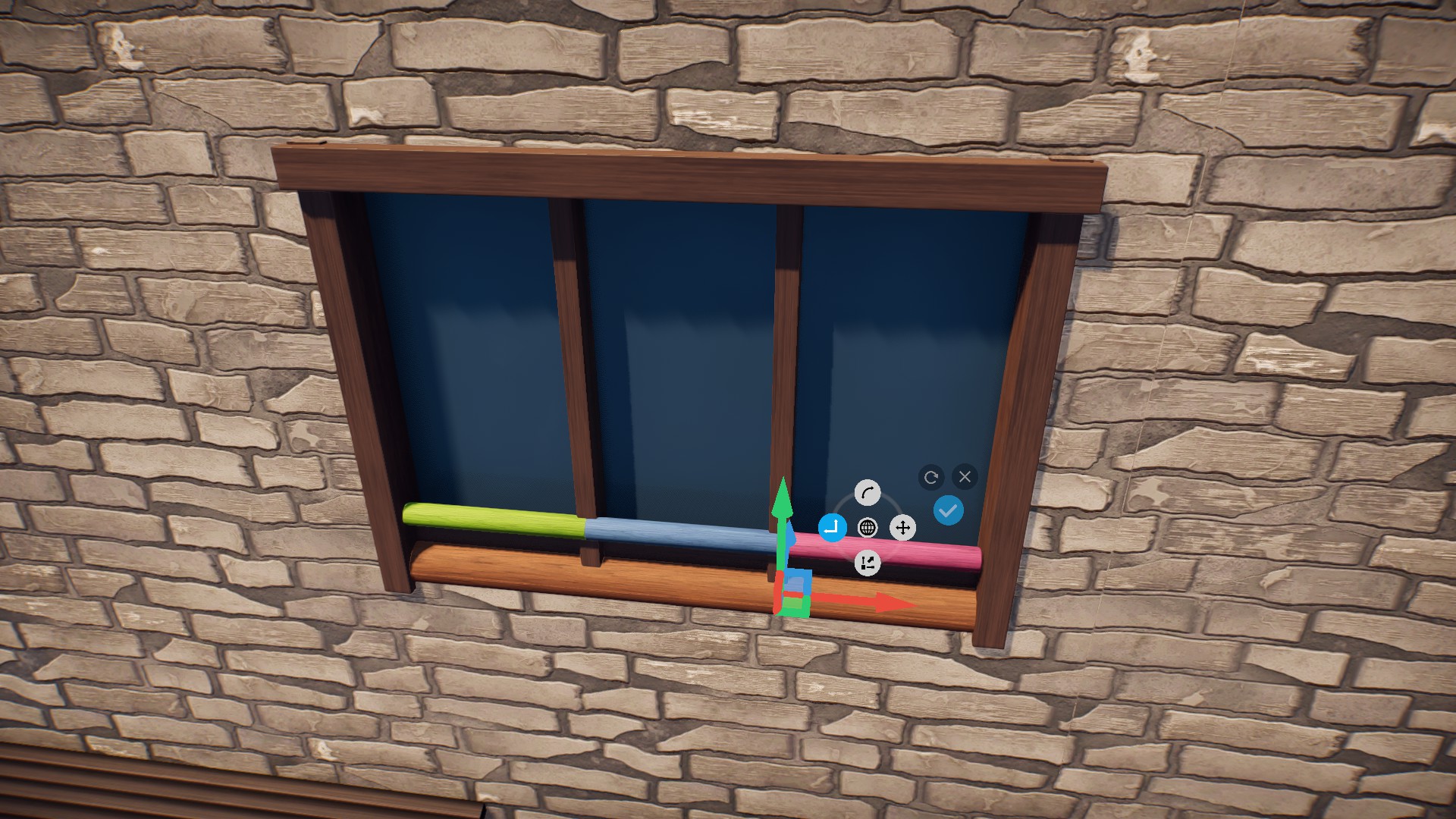
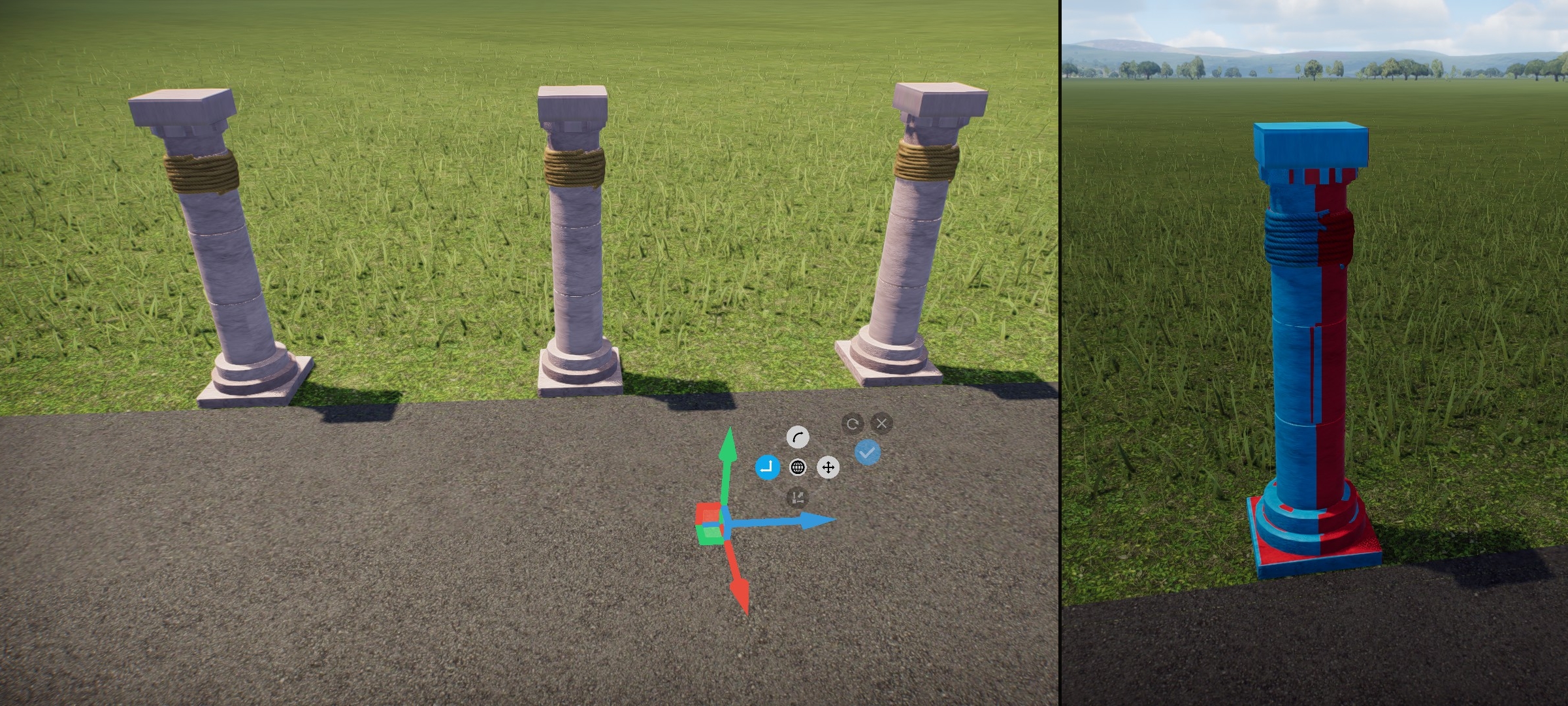
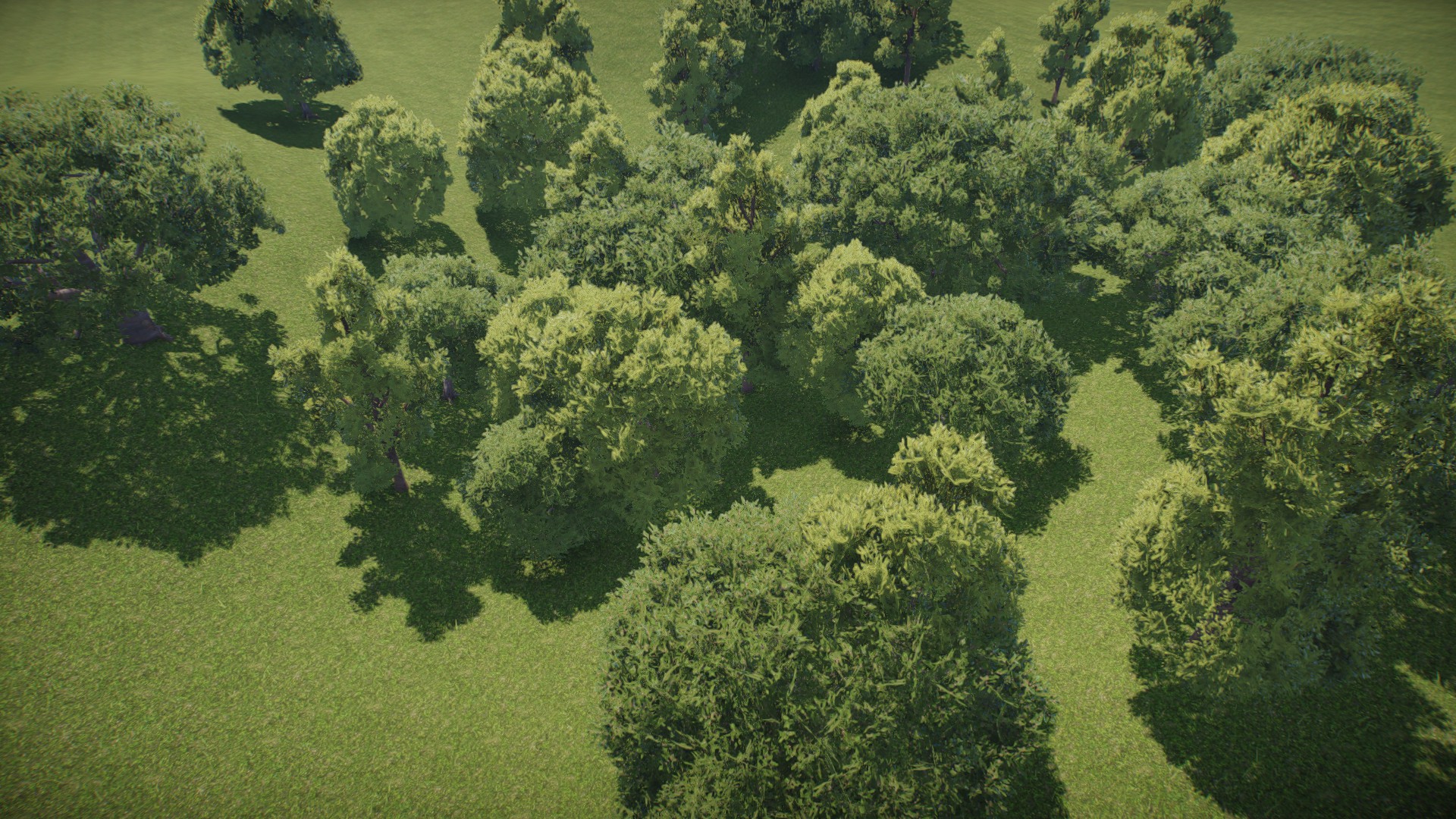
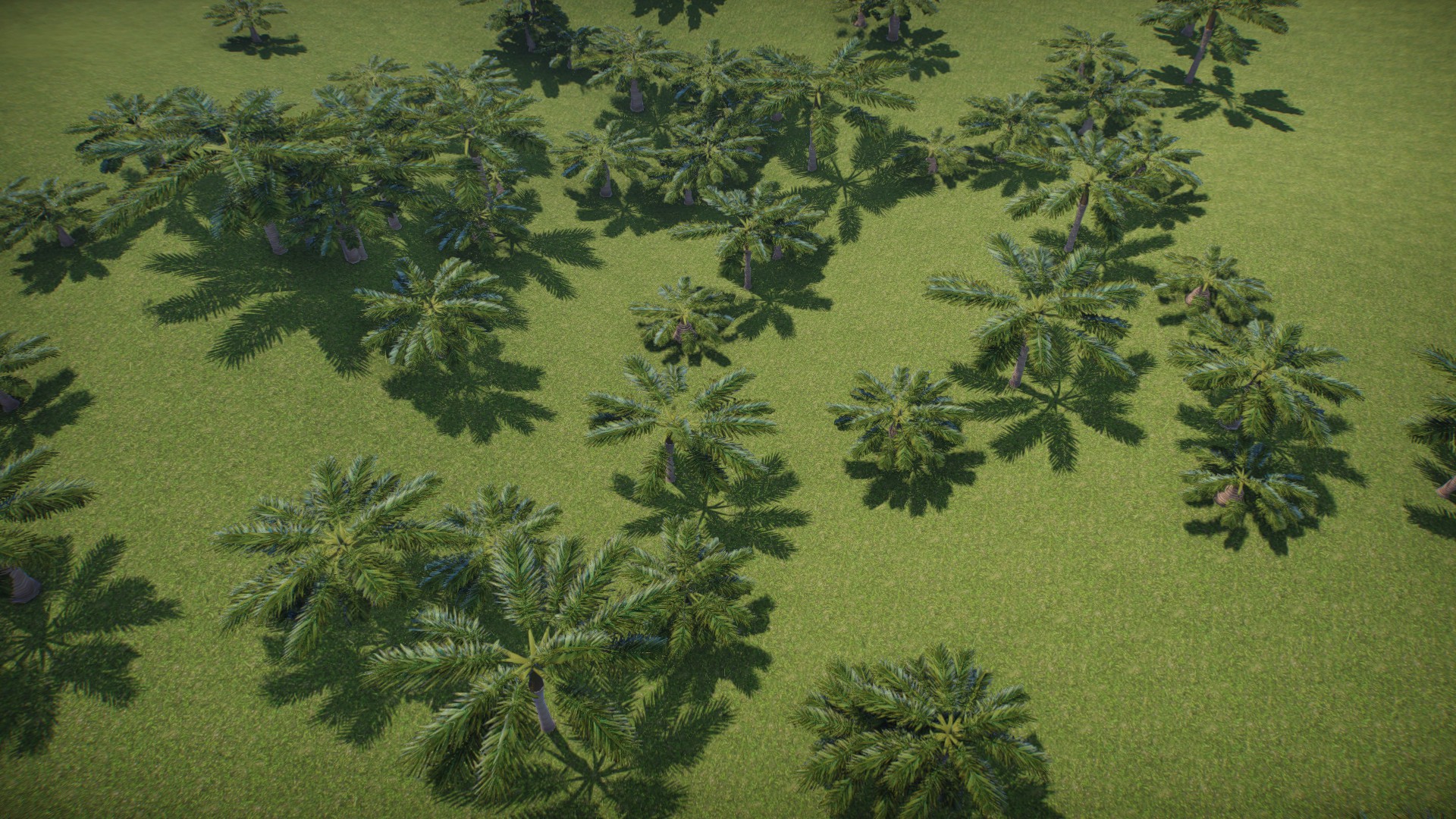
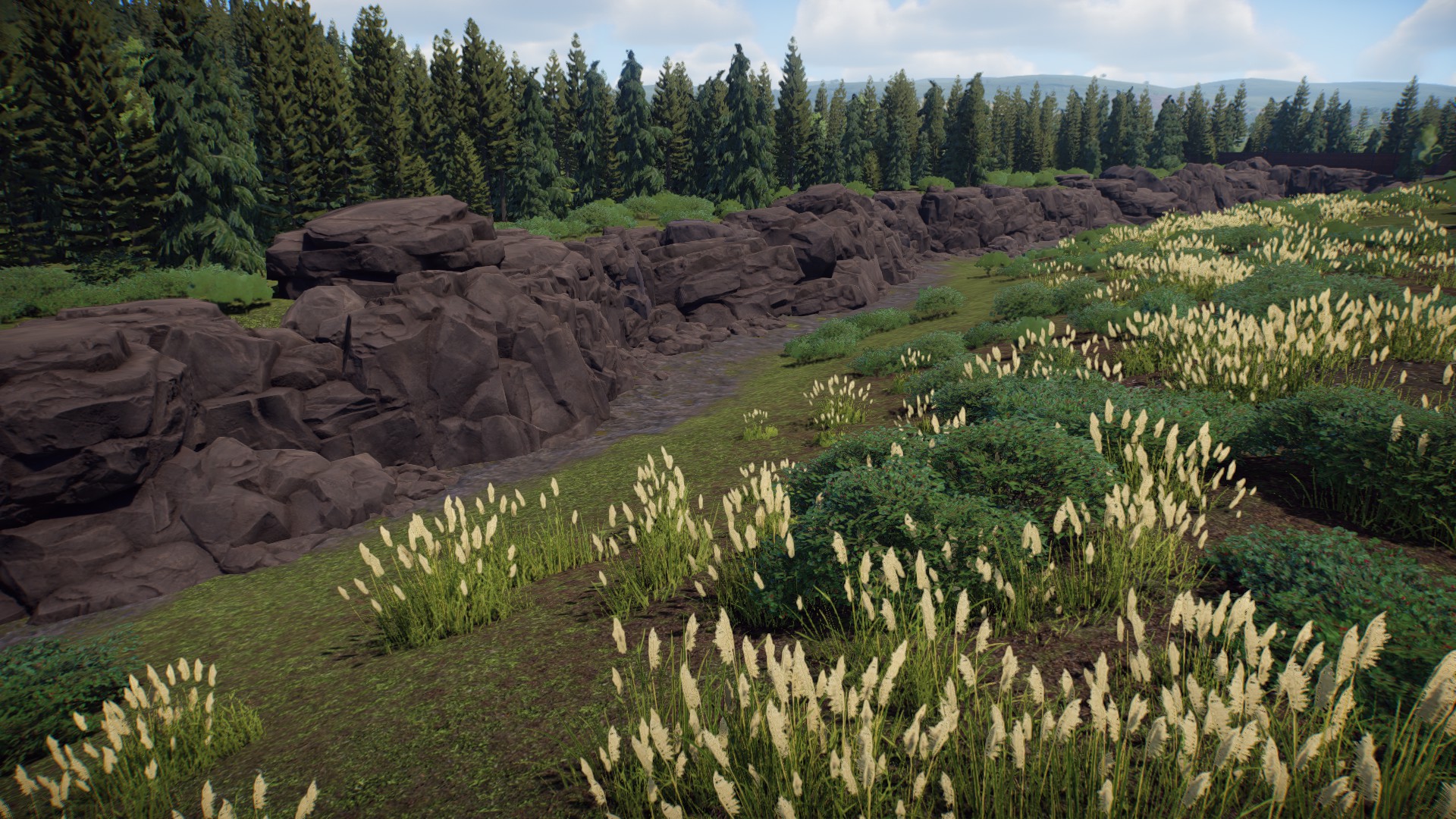
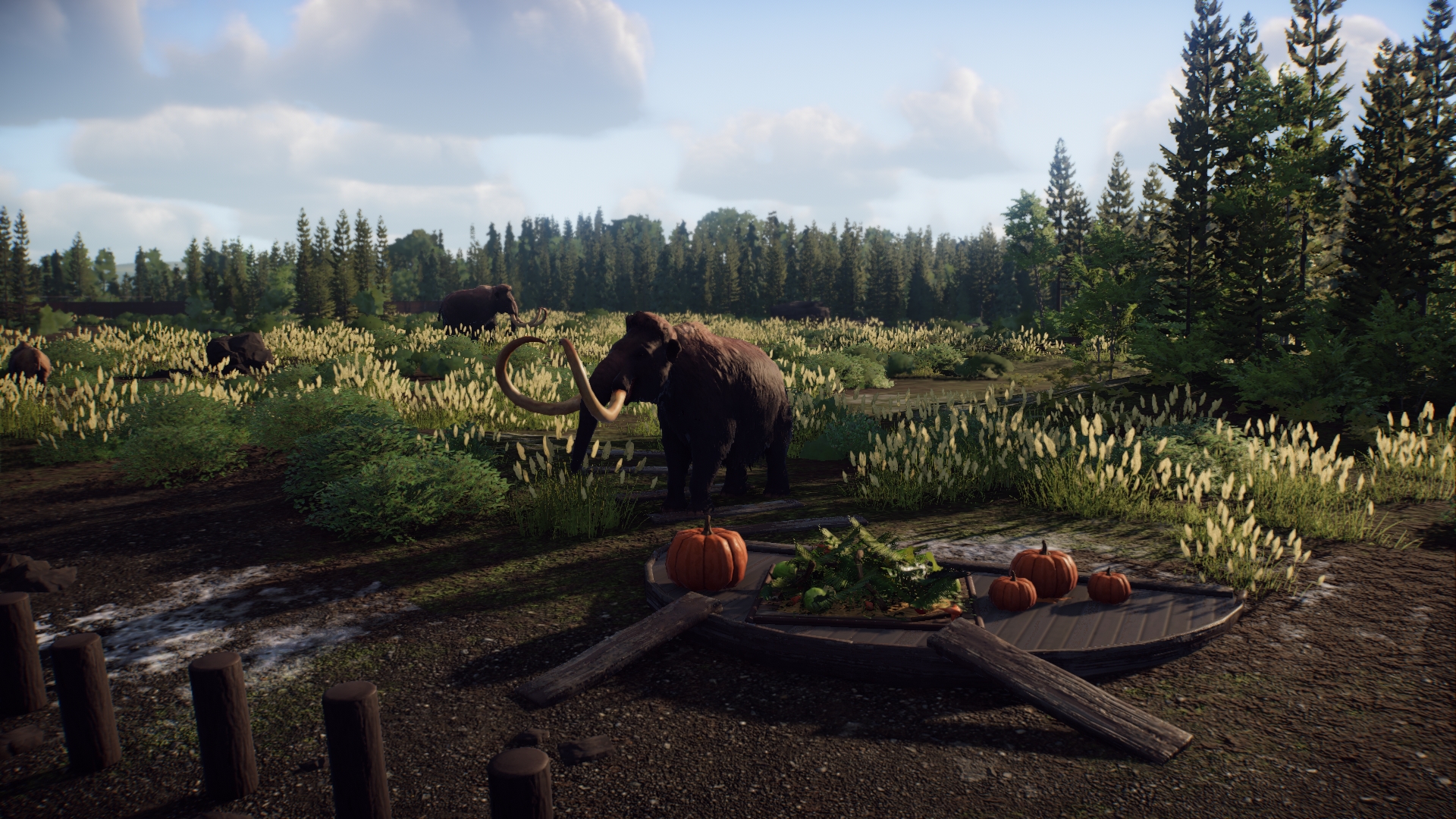
Leave a Reply